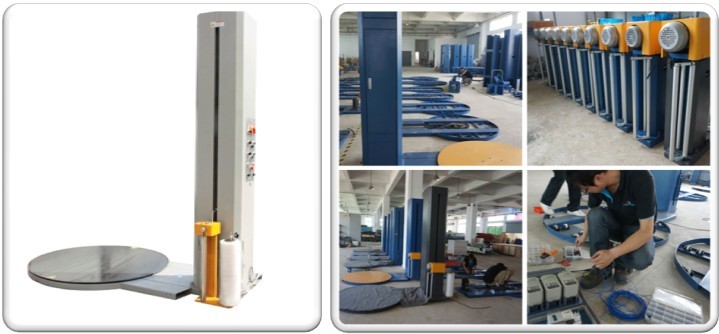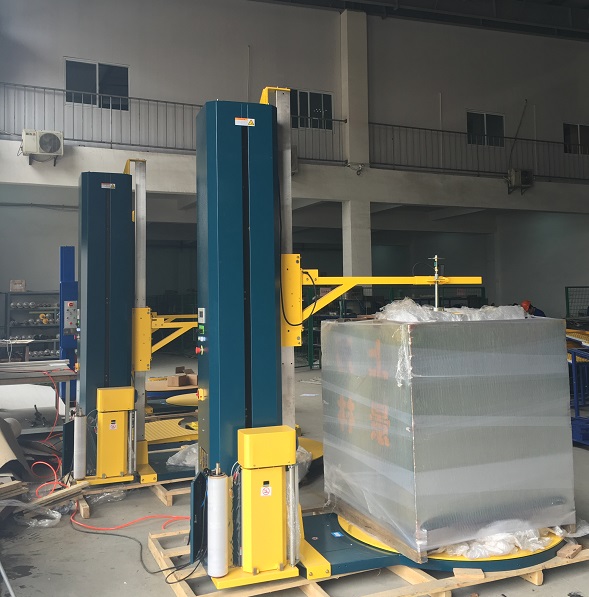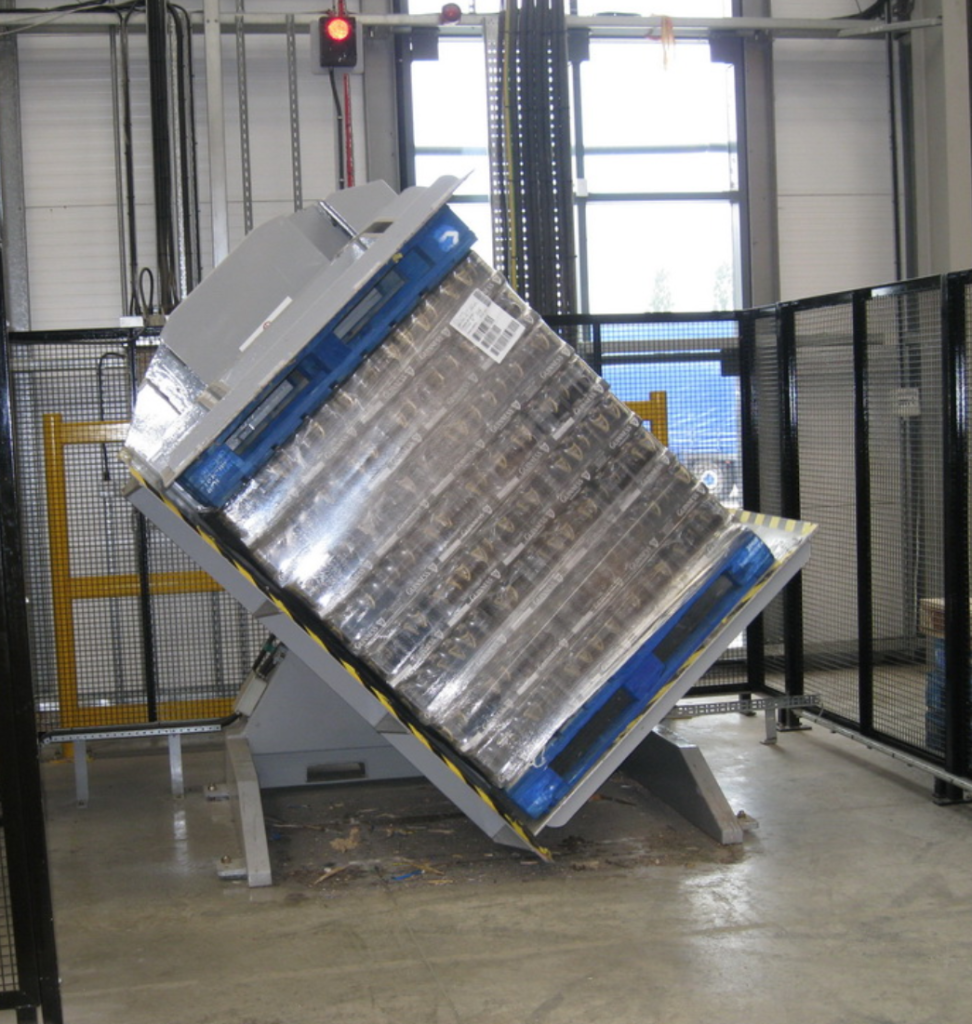Optimizing Load Security: A Guide to Block Pallet Stretch Wrapping Machines

Ensuring the stability and protection of palletized goods, especially heavy or irregularly shaped block loads, is critical for safe and efficient transport and storage. The block pallet stretch wrapping machine, often referred to simply as a pallet wrapper or stretch wrapper, is a cornerstone technology in modern logistics and manufacturing environments for achieving reliable load containment. These machines utilize stretch film, typically Linear Low-Density Polyethylene (LLDPE), to tightly unitize pallet loads, safeguarding them against shifting, damage, and contamination during handling and transit.
How Block Pallet Stretch Wrapping Works

The fundamental principle behind stretch wrapping is the application of a stretchable plastic film under tension around a pallet load. The process generally involves:
- Loading: The block pallet is placed onto the machine's wrapping zone (e.g., a turntable or within the reach of a rotary arm).
- Film Attachment: The leading edge of the stretch film is attached to the pallet base or load.
- Wrapping Cycle: The machine initiates the wrapping process.
- Turntable Wrappers: The load rotates on a turntable while a film carriage moves vertically up and down a mast, dispensing the film.
- Rotary Arm Wrappers: The load remains stationary while an arm holding the film carriage rotates around it, applying the film. This is often preferred for very heavy or unstable loads.
- Film Stretching (Pre-Stretch): Modern machines incorporate a pre-stretch mechanism. This system stretches the film before it's applied to the load, often achieving pre-stretch levels between 200% and 300%. This means 1 meter of film can be stretched to cover 3 or 4 meters. Pre-stretching significantly increases the film's tensile strength and reduces material consumption, leading to cost savings and stronger load containment.
- Film Cutting and Sealing: Once the programmed wrap cycle is complete, the film is automatically cut and wiped or heat-sealed to the load, securing the wrap.

pallet06 Key Benefits of Using Stretch Wrapping Machines for Block Pallets
Implementing a dedicated block pallet stretch wrapping machine offers numerous advantages:
- Enhanced Load Stability and Protection: Tightly wrapped loads are less likely to shift or collapse during handling and transportation, significantly reducing product damage. The film also provides protection against dust, moisture, and tampering.
- Improved Packaging Efficiency: Automated and semi-automated wrapping processes are considerably faster than manual wrapping, boosting throughput and reducing labor requirements. Consistent wrap cycles ensure uniformity.
- Reduced Material Costs: The pre-stretch function optimizes film usage, leading to substantial savings on consumables compared to manual wrapping or machines without pre-stretch capabilities.
- Increased Workplace Safety: Proper load containment minimizes the risk of falling products, contributing to a safer working environment in warehouses and loading docks.
- Professional Presentation: Uniformly wrapped pallets present a more professional appearance to customers and downstream handlers.
Types of Pallet Stretch Wrapping Machines
Stretch wrappers are broadly categorized based on their level of automation:
- Semi-Automatic Stretch Wrappers: Require an operator to place the pallet, attach the film, initiate the cycle, and cut the film (though some have auto cut/wipe features). They are suitable for low-to-medium volume operations. Turntable and rotary arm models fall into this category.
- Automatic Stretch Wrappers: Can operate without direct operator intervention. They often integrate into conveyor lines, automatically receiving pallets, wrapping them according to pre-set parameters, and discharging them. Ideal for high-volume, automated environments.
Selecting the Right Machine: Key Considerations
Choosing the appropriate block pallet wrapping machine depends on several factors:
- Load Type and Weight: Ensure the machine's capacity (turntable diameter/weight limit or rotary arm reach) suits your typical block pallet dimensions and weight.
- Required Throughput: Match the machine's speed (pallets per hour) to your operational needs.
- Level of Automation: Decide between semi-automatic and fully automatic based on volume, labor availability, and budget.
- Pre-Stretch System: Look for reliable powered pre-stretch systems offering high, consistent stretch levels (e.g., 200-300%) for optimal film usage and load security.
- Control Features: Programmable wrap patterns, adjustable tension control, and variable speed settings allow customization for different load types.
- Safety Features: Emergency stops, safety fencing (for automatic models), and film carriage safety locks are crucial.

pallet chanager machine 1 The Importance of Stretch Film Quality
The effectiveness of the wrapping process heavily relies on the quality of the LLDPE stretch film used. Factors like film gauge (thickness), puncture resistance, and clarity should be considered based on the specific load requirements. Using the correct film in conjunction with optimized machine settings (tension, pre-stretch) is key to achieving secure and cost-effective pallet unitization.
Operational Best Practices
To maximize the benefits of your stretch wrapper:
- Ensure pallets are loaded correctly onto the machine.
- Properly thread the film through the pre-stretch carriage.
- Regularly inspect and clean rollers, belts, and sensors.
- Perform routine maintenance as recommended by the manufacturer.
- Train operators on safe and efficient machine operation.
Conclusion
The block pallet stretch wrapping machine is an indispensable asset for industries handling block-type loads. By providing robust load containment, enhancing operational efficiency, reducing material costs, and improving safety, these machines offer a significant return on investment. Whether opting for a semi-automatic or fully automatic system, understanding the technology, key features, and the role of quality stretch film enables businesses to implement effective and reliable pallet packaging solutions, ensuring goods arrive safely at their destination. For further information on packaging machinery standards, consult resources from organizations like PMMI, The Association for Packaging and Processing Technologies.

